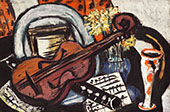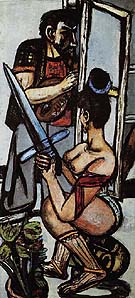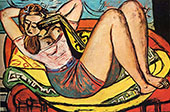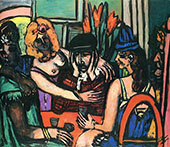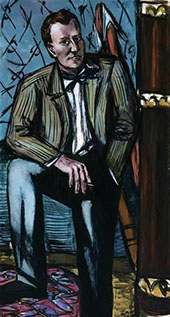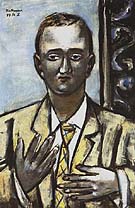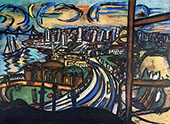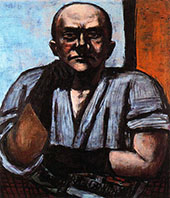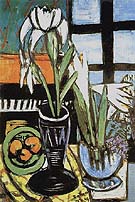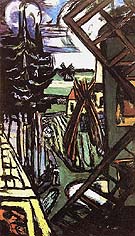Max Beckmann Oil Painting Reproductions
Max Beckmann replica paintings on Canvas for sale
Max Beckmann: A Trailblazing German Expressionist Artist
Max Beckmann is a German Expressionist artist born in Leipzig, Germany, on February 12, 1884. His father was an accountant, and his mother was the daughter of a wealthy brewery owner.
Beckmann showed an early interest in art and began taking drawing lessons at ten. He attended the Grand Ducal Art School in Weimar from 1900 to 1903, whose students were influenced by the Barbizon School and rejected idealized art compositions. At the Grand Ducal Art School, Beckmann studied under another German artist, Franz von Stuck, who was famous for his Symbolism paintings.
After completing his studies, Beckmann moved to Berlin, becoming part of the avant-garde art scene. Max Beckmann's early paintings reveal the influence of the symbolist paintings of Edvard Munch and Vincent van Gogh's Post Impressionist paintings.
Famous Expressionist Paintings by Max Beckmann
A prolific artist, Beckmann produced over 800 paintings between 1905 and 1950.
During the early part of the 20th century, a group of German artists formed the Expressionist art movement. These artists rejected traditional academic art to focus on expressing emotion and inner feelings through bold colors and distorted forms. Max Beckmann is a leading figure in this art movement, along with other famous German artists such as Ernst Ludwig Kirchner and Emil Nolde.
Max Beckmann links himself with the New Objectivity Art Movement and earns recognition for his Modern Art paintings and triptych art. His career was interrupted by both World Wars; the Nazis persecuted him, and in 1937, his paintings were blacklisted as being degenerative.
Max Beckmann's paintings exhibit intense emotional content and employ vivid colors with bold brushstrokes. His oil paintings often depict scenes of urban life, including cabarets, circuses, and city streets, portraying a sense of unease and anxiety.
One of Max Beckmann's famous paintings is The Night, a triptych that depicts the horrors of World War 1. The central panel shows a group of soldiers with twisted faces in agony. The two side panels of this triptych painting show scenes of chaos and destruction and the senseless brutality of war.
Another famous painting is Self-Portrait with Horn in 1938, showing Beckmann holding a horn as a symbol of his love for music. This painting reflects the artist's inner turmoil and struggles to find meaning in a rapidly changing world.
In 1937, when the war was over, Max Beckmann moved to Amsterdam. However, in 1947, he moved to the United States to teach at the University of Washington, Saint Louis, where he remained until he died in 1950.
Max Beckmann's Legacy and impact on the world of Expressionist Art.
Max Beckmann's paintings are exhibited in major museums, including the Tate Modern in London and MoMA in New York. In 2022, his Self Portrait Yellow and Pink sold at $20.7 million, making it one of the most expensive paintings ever sold by auction in Germany. Max Beckmann is one of the many famous German artists whose paintings have had a significant impact. Other Expressionist German artists who have left their mark are Otto Dix, Wassily Kandinsky, and Gabriele Munter.
Discover Max Beckmann art and many other fine art reproductions by famous artists of the German Expressionist art movement.
Cannot Find What You Are Looking For?
Reproduction Gallery Information
Customer Service
(Send Us A Message)
Tel: (503) 937 2010
Fax: (503) 937 2011





